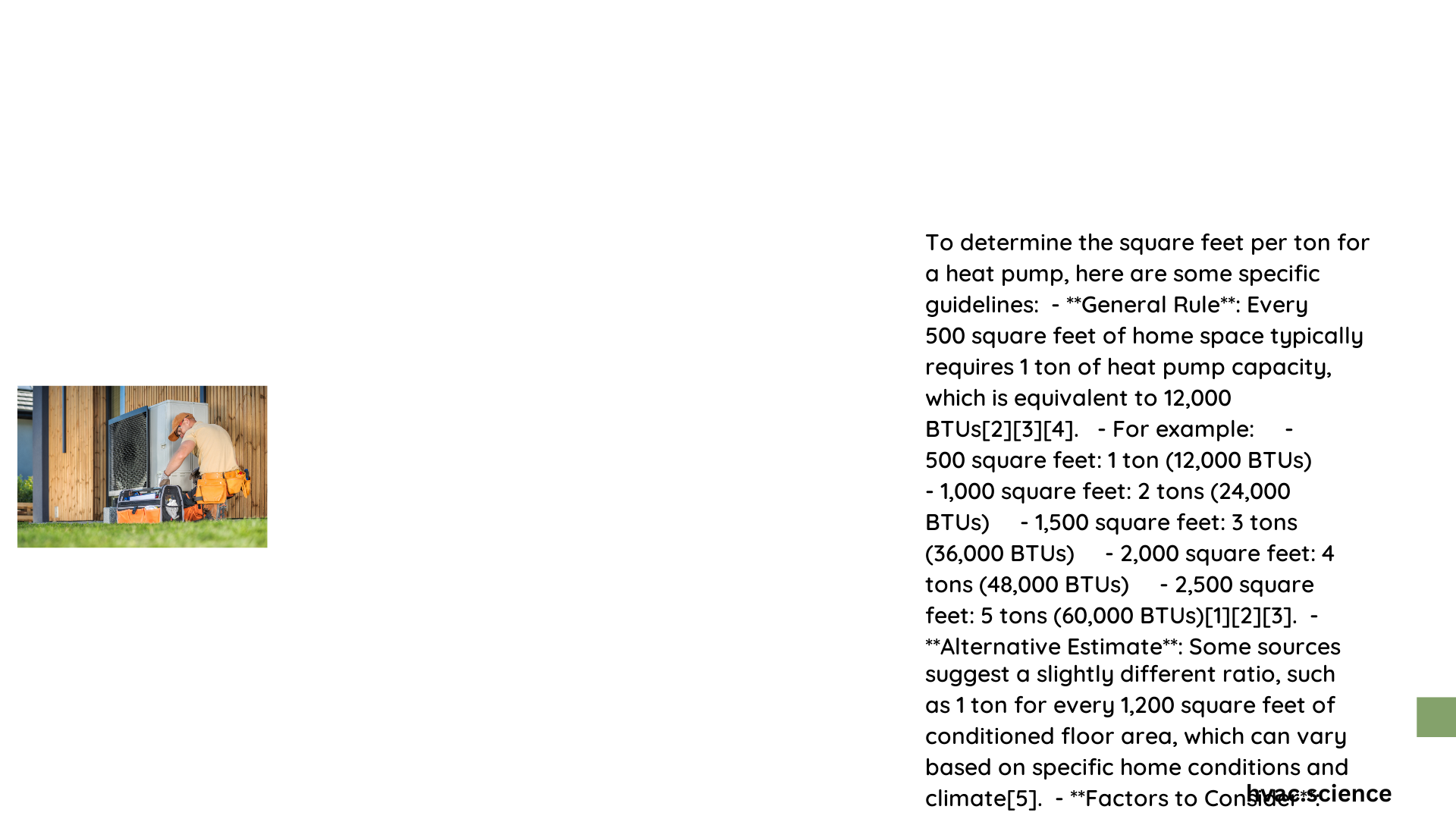Heat pump square feet per ton is a critical calculation for homeowners seeking optimal heating and cooling efficiency. This precise measurement determines the appropriate heat pump capacity based on home size, climate conditions, and structural characteristics. Understanding this ratio ensures comfortable temperatures, energy savings, and proper system performance across diverse residential environments.
What Determines Heat Pump Square Feet per Ton?
How Do Climate Zones Affect Heat Pump Sizing?
Climate zones play a crucial role in determining heat pump square feet per ton. Different regions require unique considerations:
| Climate Zone | Adjustment Factor | Typical Characteristics |
|---|---|---|
| Region 1 & 5 | 1.3 | Colder climates, higher heating demands |
| Region 2 & 4 | 1.15 | Moderate temperature variations |
| Region 3 | 1.0 | Mild, consistent temperatures |
What Square Footage Calculations Matter?
The standard rule of thumb for heat pump sizing follows this basic calculation:
– 500 square feet = 1 ton (12,000 BTUs)
– 1,000 square feet = 2 tons (24,000 BTUs)
– 1,500 square feet = 3 tons (36,000 BTUs)
How Does Home Insulation Impact Sizing?
Insulation quality significantly influences heat pump square feet per ton:
Key Insulation Factors
- R-value of wall and ceiling insulation
- Air sealing effectiveness
- Window quality and placement
- Construction year and building materials
What Inputs Determine Accurate Heat Pump Sizing?
Precise heat pump sizing requires comprehensive evaluation:
- Total conditioned square footage
- Ceiling height
- Window types and orientation
- Local climate data
- Number of home occupants
- Heat-generating appliances
- Home architectural design
Why Professional Assessment Matters?
While general guidelines exist, professional HVAC technicians recommend:
– Conducting detailed heat load calculations
– Using specialized sizing software
– Performing on-site comprehensive evaluations
– Considering unique home characteristics
How Do Efficiency Ratings Relate to Sizing?
Efficiency ratings like SEER and HSPF don’t directly change square feet per ton calculations but impact overall system performance:
- Minimum SEER Rating: 14
- High-Efficiency SEER: Up to 20
- Minimum HSPF Rating: 8.2
- High-Efficiency HSPF: Up to 10
What Challenges Exist for Different Home Types?
Older Home Considerations
- Inefficient ductwork
- Poor insulation
- Higher air infiltration
- Complex room layouts
New Construction Advantages
- Advanced insulation techniques
- Efficient ductwork design
- Better air sealing
- Modern energy-efficient features
Practical Recommendations

- Always consult professional HVAC technicians
- Use comprehensive sizing calculators
- Consider long-term energy efficiency
- Factor in local climate conditions
- Invest in quality insulation
Final Insights
Heat pump square feet per ton is not a one-size-fits-all calculation. Each home requires personalized assessment, considering multiple variables to ensure optimal comfort and energy efficiency.
